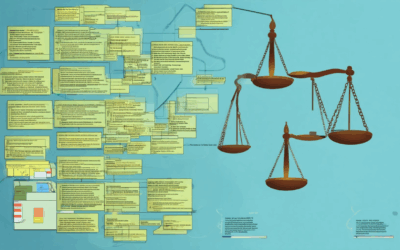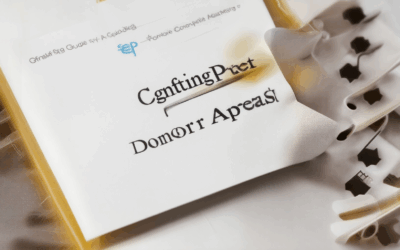Nonprofit campaign planning is crucial for organizations aiming to make a meaningful impact, yet many struggle with creating strategies that resonate and succeed. With limited resources, competing priorities, and ever-evolving societal demands, nonprofits often find themselves at a crossroads. Whether you’re launching a new initiative, expanding your reach, or enhancing community engagement, having a well-structured nonprofit campaign planning framework is essential to staying on track and achieving your mission-driven goals. This comprehensive guide will walk you through the key steps, tools, and best practices needed to craft a nonprofit campaign planning strategy that aligns with your organization’s vision and delivers measurable results. From setting clear objectives to executing impactful actions, we’ll explore proven approaches that empower your team to create campaigns that inspire and engage. Let’s dive into the fundamentals of effective nonprofit campaign planning and discover how to turn your ideas into actionable success.
Key Takeaways
– Define Clear Objectives: Start by establishing specific, measurable goals aligned with your mission, whether it’s fundraising, awareness-building, or volunteer engagement.
– Research Your Target Audience: Conduct thorough research to understand demographics, interests, and behaviors to tailor your strategies effectively.
– Develop a Comprehensive Strategy: Choose a mix of digital and traditional methods, allocate budgets wisely, and focus on fostering engagement through interactive tools and storytelling.
– Monitor Progress and Collaborate: Track key milestones, leverage data analytics, form partnerships, and involve the community to maximize reach and credibility.
– Leverage Technology and Volunteers: Integrate digital platforms, engage volunteers at every stage, and ensure cultural sensitivity to build trust and inclusivity.
– Align Strategies with Mission and Involve Stakeholders: Evaluate how your campaign supports broader goals, collaborate with diverse teams, and secure necessary resources for success.
– Set Measurable Goals and Create a Timeline: Define KPIs, break down long-term goals into short-term milestones, and assign responsibilities to keep everyone aligned.
– Allocate Resources Wisely and Engage Supporters: Plan for logistics, use multiple channels to build momentum, and encourage peer-to-peer advocacy.
– Evaluate and Optimize Continuously: Conduct post-campaign reviews, gather feedback, and refine future initiatives based on insights.
– Develop Contingency Plans and Celebrate Successes: Prepare for challenges and celebrate key players to inspire future efforts.

How to Create an Effective Nonprofit Campaign Planning Strategy
To craft a winning nonprofit campaign planning strategy, follow these organized steps:
1. Define Your Mission and Goals
- Mission Focus: Align your campaign with your organization’s core mission. Clearly articulate how your efforts contribute to your broader objectives.
- Goal Setting: Establish measurable targets using SMART goals. These should be Specific, Measurable, Achievable, Relevant, and Time-bound.
2. Identify Your Target Audience
- Audience Segmentation: Divide your supporter base into groups based on demographics, interests, or engagement levels. Tailor your messaging to resonate with each group.
- Research Insights: Utilize surveys, social media analytics, and donor feedback to understand preferences and pain points.
3. Set Clear, Achievable Tactics
- Strategy Development: Choose tactics that align with your goals. Examples include:
- Digital Marketing: Leverage social media platforms, email campaigns, and website content to reach wider audiences.
- Volunteer Recruitment: Develop programs that attract and retain volunteers through meaningful opportunities.
- Partnerships: Collaborate with like-minded organizations to amplify your impact and share resources.
4. Manage Your Budget Effectively
- Funding Allocation: Distribute resources wisely across key areas like outreach, program delivery, and evaluation.
- Cost Efficiency: Regularly track expenses and consider cost-effective solutions to maximize impact without overspending.
5. Evaluate and Adapt Continuously
- Performance Monitoring: Use metrics like donation rates, volunteer retention, and event attendance to gauge success.
- Adjustments: Be prepared to tweak strategies based on feedback and data. Iterate until you achieve optimal outcomes.
6. Build Collaborative Partnerships
- Strategic Alliances: Partner with organizations that share your cause or can complement your work. This expands your reach and adds credibility.
- Resource Sharing: Pool resources and expertise to enhance program effectiveness and reduce operational costs.
Best Practices for Success
- Stay Updated: Keep abreast of nonprofit trends and best practices to maintain relevance and innovation.
- Involve Stakeholders: Engage board members, donors, and volunteers early to ensure alignment and buy-in.
By following these steps, you can develop a nonprofit campaign strategy that drives meaningful change and achieves your organizational objectives. For further insights, explore our comprehensive guide on nonprofit campaign planning.
Key Steps to Create an Effective Nonprofit Campaign Plan
To craft a successful nonprofit campaign plan, follow these organized steps:
- Define Clear Objectives : Begin by establishing specific, measurable goals aligned with your nonprofit’s mission. Whether it’s fundraising, awareness, or volunteer engagement, ensure objectives are realistic and time-bound.
- Identify Target Audience : Conduct research to understand your audience’s demographics, interests, and behaviors. Utilize surveys, social media insights, and community interactions to tailor your approach.
- Develop Strategic Approaches : Create a multi-channel strategy, incorporating email, social media, and events, especially targeting different segments with personalized messages. Engage volunteers through coordinated programs and training.
- Measure Impact : Set key performance indicators (KPIs) such as donation amounts, event attendance, and website traffic. Use a mix of quantitative and qualitative metrics to gauge success.
- Build Collaborative Partnerships : Partner with other nonprofits, businesses, or community groups. Effective communication and relationship-building are key to forming beneficial alliances.
- Secure Funding : Prepare thoroughly for grant applications and sponsorship requests. Identify suitable funders through research and networking, tailoring proposals to each funder’s priorities.
- Stay Organized : Implement project management tools to track tasks and deadlines. Hold regular team meetings to ensure alignment and progress toward goals.
- Reflect and Improve : After the campaign, conduct a thorough review to identify strengths and areas for improvement. Gather feedback from stakeholders to enhance future strategies.
By following these steps, you can create a well-rounded and impactful nonprofit campaign plan, ensuring your organization meets its objectives and maximizes its impact.

Top Strategies for Effective Nonprofit Campaign Planning
Effective nonprofit campaign planning requires a strategic approach to maximize impact and achieve mission goals. Below are proven strategies to ensure your organization’s efforts succeed:
- Research and Data Collection
- Conduct thorough research to understand your target audience, mission, and competition.
- Use surveys, polls, and donor analytics to gather valuable insights.
- Link to resources for advanced research tools .
- Define Clear Objectives and Messaging
- Establish measurable goals aligned with your nonprofit’s mission.
- Create consistent and compelling messaging across all platforms.
- Use storytelling to engage donors and volunteers effectively.
- Engage Stakeholders Proactively
- Involve board members, volunteers, and key partners in campaign planning.
- Hold regular meetings and feedback sessions to ensure alignment.
- Foster a collaborative culture to drive initiative success.
- Build Strategic Partnerships
- Prioritize collaborations with like-minded organizations and businesses.
- Seek sponsorships and corporate partnerships to support campaign activities.
- Explore partnership strategies for maximum impact.
- Integrate Technology Effectively
- Utilize digital tools for campaign management, communication, and reporting.
- Implement donor management systems to track and engage supporters.
- Find tech solutions for nonprofits .
- Encourage Continuous Learning and Adaptation
- Stay updated on industry trends and best practices through training and resources.
- Be open to feedback and willing to adjust strategies as needed.
- Learn from past campaigns to refine future approaches.
- Evaluate and Adapt Campaigns Regularly
- Monitor key performance indicators (KPIs) to measure success.
- Conduct post-campaign evaluations to identify strengths and areas for improvement.
- Use data-driven insights to refine strategies and optimize outcomes.

Creating an Effective Nonprofit Campaign Planning Guide
To craft a winning nonprofit campaign planning guide, follow these organized steps:
- Define Clear Objectives : Start by establishing specific, measurable goals aligned with your mission. Clearly articulate what you aim to achieve, whether it’s raising funds, increasing awareness, or engaging volunteers.
- Identify Your Target Audience : Conduct research to understand who your campaign is targeting. Consider factors like demographics, interests, and behaviors to tailor your strategies effectively.
- Develop a Comprehensive Strategy :
- Tactics : Choose a mix of digital and traditional methods, such as social media marketing, email campaigns, events, and partnerships.
- Budget Allocation : Create a detailed budget, prioritizing key activities and ensuring efficient resource use.
- Foster Engagement :
- Interactive Tools : Utilize online tools and platforms to encourage participation and donations.
- Storytelling : Share compelling stories to inspire action and build emotional connections with your audience.
- Monitor Progress :
- Set Milestones : Track key performance indicators to measure success.
- Data Analytics : Leverage analytics tools to assess campaign performance and adjust strategies as needed.
- Collaborate with Partners :
- Partnerships : Form alliances with other nonprofits or influencers to expand your reach and credibility.
- Community Involvement : Engage local communities to boost support and participation levels.
- Evaluate and Optimize :
- Post-Campaign Review : Assess the campaign’s impact, gathering feedback from stakeholders.
- Continuous Improvement : Use insights gained to refine future initiatives, ensuring ongoing success.
By following these steps, your nonprofit campaign planning guide will be well-structured, engaging, and effective in driving desired outcomes.
Essential Components of a Successful Nonprofit Campaign Planning Process
The success of a nonprofit campaign hinges on several critical components that work synergistically to drive impact and engagement. Here’s a breakdown of the key elements:
- Clear Objectives :
Every campaign must begin with well-defined goals. Whether it’s raising funds, increasing awareness, or fostering community involvement, having a clear purpose ensures everyone is aligned. - Research-Driven Strategy :
Conduct thorough market research to understand your target audience, competitors, and industry trends. This helps in crafting strategies that resonate and stand out. - Engaging Content Creation :
Develop compelling content that communicates your cause effectively. This could include stories, videos, infographics, or educational materials that inspire action and donations. - Stakeholder Collaboration :
Build a strong team of volunteers, board members, and partners who share your passion. Collaborative efforts lead to more innovative solutions and greater community buy-in. - Resource Allocation :
Secure the necessary resources, whether financial support, in-kind donations, or technological tools, to execute your campaign successfully. - Measurable Outcomes :
Define key performance indicators (KPIs) to track progress toward your goals. Regularly analyze data to adjust strategies and optimize results. - Continuous Improvement :
After the campaign ends, conduct a post-mortem analysis to identify successes, challenges, and areas for improvement. Use this feedback to refine future initiatives. - Technology Integration :
Leverage digital platforms to amplify your reach. Social media, email marketing, and donor management software can significantly boost campaign effectiveness. - Volunteer Involvement :
Engage volunteers at every stage of the campaign to distribute materials, manage events, and provide administrative support. Their dedication can greatly enhance campaign outcomes. - Cultural Sensitivity :
Ensure your campaign respects diverse perspectives and cultural contexts to build trust and inclusivity among your stakeholders.
By integrating these elements, nonprofits can create impactful campaigns that not only meet their objectives but also foster lasting change in their communities. For more resources and tools to enhance your planning process, visit our campaign planning guide .

Best Practices for Creating an Effective Nonprofit Campaign Planning Strategy
Planning an effective nonprofit campaign requires careful thought and strategic execution. Here are the key steps to ensure your campaign achieves its goals:
- Define Clear Objectives
- Establish specific, measurable goals aligned with your mission.
- Identify the target audience and key messaging.
- Involving Stakeholders
- Engage board members, volunteers, and donors early in the process.
- Form a cross-functional team to ensure diverse perspectives.
- Align Strategies with Mission
- Evaluate how the campaign supports your organization’s broader goals.
- Ensure consistency between tactics and your core values.
- Segment Your Audience
- Divide supporters based on demographics, interests, and giving history.
- Tailor communication strategies for each segment.
- Set Measurable Goals
- Specify quantitative outcomes, such as funds raised or donations acquired.
- Break down long-term goals into achievable short-term milestones.
- Create a Timeline
- Outline key deadlines for campaign activities.
- Assign responsibilities and set expectations for each team member.
- Allocate Resources Wisely
- Secure adequate funding, staffing, and materials.
- Plan for logistics, including event coordination and outreach tools.
- Engage Supporters Actively
- Use email, social media, and events to build momentum.
- Encourage peer-to-peer sharing and advocacy.
- Monitor and Evaluate
- Track key performance indicators (KPIs) regularly.
- Adjust strategies based on feedback and data.
- Develop Contingency Plans
- Prepare for potential challenges like budget cuts or low engagement.
- Identify backup strategies to maintain campaign momentum.
- Celebrate Successes
- Recognize contributions of key players publicly.
- Use success stories to inspire future initiatives.
By following these steps, your nonprofit can create a well-organized and impactful campaign strategy that drives meaningful change. For more resources on nonprofit campaign planning, explore our comprehensive guide .





0 Comments